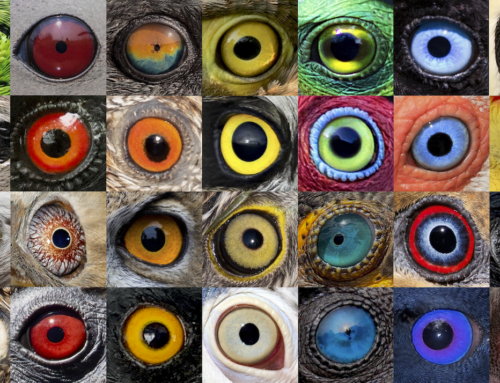
LINKED PAPER
Temporal constraints influence reproductive characteristics that are related to the pace-of-life continuum in geese. Gurney, K., Alisauskas, R., Stalwick, J., Fondell, T. 2024. IBIS. DOI: 10.1111/ibi.13301 VIEW
This blog isn’t so much about the article I’m promoting. Although I’m happy to see our work about Canada-type geese in print and you really should read it – this story is about our professional relationships and the inspirations we find to do our work. It begins in Fairbanks, Alaska, with me accepting a post-doctoral appointment at the University of Alaska, Fairbanks, bound for the pristine wilderness of Alaska’s North Slope to study wetland fauna and Arctic ecosystem change. As an early-career researcher, I was thrilled to land this promising opportunity in such an amazing environment. Unfortunately, as post-docs go, it was a tough one: lots of time away from family, struggles finding my voice as a researcher, and difficulty adjusting to life in a new country. As life often has it, inspiration to keep going came when I most needed it and least expected it. In this case, my inspiration came from Tom Fondell, a colleague at the U.S. Geological Survey, who was part of the Changing Arctic Ecosystems program. Tom was a biologist who worked primarily with waterbirds, but was passionate about all birds, about conserving wild spaces, and who was always ready with a joke or funny story to make long days in the field more enjoyable and endless hikes across the tundra more adventurous. Tom loved to tell you about his bees – he’d been involved with bee keeping for decades – and could often be heard talking about his home state of Minnesota with a reverence that I thought most people reserved for their loved ones.

Figure 1. Just another meal on the tundra – sharing stories with Tom on the Zodiac © Kirsty Gurney.
Over many hot coffees on many cold mornings north of the Arctic Circle, we discussed all manner of random thoughts that occupy one’s life in a remote field camp: When will the river ice break? How many birds will we see today? What’s for dinner? Of course, we also talked about science. My academic background at this point was primarily related to boreal ducks and wetland ecology, so I had much to learn from Tom’s years of experience studying Arctic-breeding geese. Importantly, it was some of these coffee-talk discussions that yielded the genesis of our paper, ‘Temporal constraints influence reproductive characteristics that are related to the pace-of-life continuum in geese’. Tom and I started talking about the ideas that formed the seeds for this work in 2012, demonstrating the sometimes lengthy incubation period that such projects require. In the bigger picture, Tom’s enthusiasm and support for me and my work never faltered, and through his friendship, positivity, and commitment to teamwork, I knew that the initial post-doctoral struggles would be worth it. Indeed, I managed to complete my post-doc in a satisfying and productive way (now with three published papers), and I remain grateful for our time working together on the tundra.

Figure 2. Tom prepares to attach a tracking device to a Greater White-fronted Goose as part of his work with the U.S. Geological Survey © Dan Ruthrauff.
With the post-doc completed, my family and I returned to Canada, and I began a position as a Research Scientist with Environment and Climate Change Canada. Progress on our shared project slowed as I acquired new duties, but fellowship with Tom, and his encouragement, never diminished. Even after being diagnosed with pancreatic cancer in 2015, Tom stayed positive about our work, motivating me to discuss our ideas with scientists in my new agency, including seasoned goose researcher, Dr. Ray Alisauskas, and Jordyn Stalwick, a new M.Sc. graduate and keen analyst, who joined our efforts to learn more about the relationships between growing season length and goose reproduction. Tom died in 2017, and with many miles to go to finish this work, it was (in large part), memories of our time on the North Slope that helped get our paper to the finish line. As scientists, we are trained to be objective, but my friendship with Tom taught me a lot about the subjective parts of our work, things apart from dissecting ideas and running models – things that help motivate us and get our work into the world. His friendship, humor, tenacity, and creativity were exactly what I needed to become a good scientist.
Tom helped me to see that mentorship can show up in unexpected places and that we are at our best – as ornithologists and as people – when we work together and support one another. These ideas are exemplified by a scholarship created in Tom’s name by his Alaskan friends and colleagues, a fitting reminder of Tom’s role as a mentor to so many. Carrying these important ideas forward is also something that I strive to do in my own career as an ornithologist, whether that means working with students or supporting conservation through co-developed, community-driven research. Tom’s integrity and his optimistic approach to life had a lasting impact on ornithology and especially the young (and young at heart) scientists who worked with him –lucky people like me. Thanks for all the help, Tom.
Image credits
Top right: Tom Fondell working with White-fronted Geese © Kirsty Gurney.
Blog posts express the views of the individual author(s) and not those of the BOU.
If you want to write about your research in #theBOUblog, then please see here




